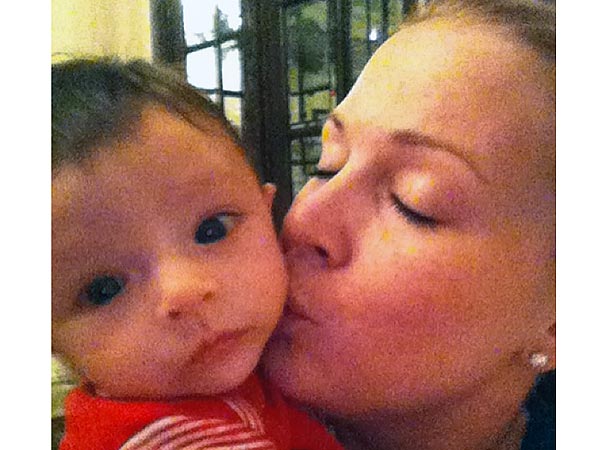
James Pomfret/Reuters
Demonstrators gathered outside the headquarters of Southern Weekly newspaper Monday in Guangzhou, China.
BEIJING — Hundreds of people gathered outside the headquarters of a newspaper office in southern China on Monday to show their support for journalists who had declared a strike to protest what they called overbearing censorship by provincial propaganda officials.
The journalists, who work for Southern Weekend, a relatively liberal newspaper that has come under increasing pressure from officials in recent years, also received support on the Internet from celebrities and well-known commentators.
“Hoping for a spring in this harsh winter,” Li Bingbing, an actress, said to her 19 million followers on a microblog account. Yao Chen, an actress with more than 31 million followers, cited a quotation by Aleksandr Solzhenitsyn, the Russian Nobel laureate and dissident: “One word of truth outweighs the whole world.”
Many of the people who showed up Monday at the newspaper offices in Guangzhou, the capital of Guangdong Province, carried banners with slogans and white and yellow chrysanthemums, a flower that symbolizes mourning. One banner read: “Get rid of censorship. The Chinese people want freedom.” Police officers watched the protesters without immediately taking any harsh actions.
The angry journalists at Southern Weekend have been calling for the removal of Tuo Zhen, the top propaganda official in Guangdong, whom the journalists blame for overseeing a change in a New Year’s editorial that ran last week and was supposed to have called for greater respect for rights enshrined in the constitution under the headline “China’s Dream, the Dream of Constitutionalism,” according to the China Media Project at the University of Hong Kong. The editorial went through layers of changes and ultimately became one praising the current political system, in which the Communist Party exercises authority over all aspects of governance.
A well-known entrepreneur, Hung Huang, said on her microblog that the actions of a local official had “destroyed, overnight, all the credibility the country’s top leadership had labored to re-establish since the 18th Party Congress,” the November gathering in Beijing that was the climax of the leadership transition.
One journalist for Southern Weekend said Monday afternoon that negotiations between the various parties had been scheduled later in the day, but there were no results from any talks as of Monday evening.
It was unclear how many employees in the newsroom had heeded the calls for a strike. It appeared Sunday that many of Southern Weekend’s reporters had declared themselves on strike. A local journalist who went by the newspaper’s Beijing office on Monday said the building appeared to be open but quiet. One employee told the journalist that the people there were not on strike. Dozens of supporters showed up outside the building at various times, some carrying signs and flowers.
The conflict was exacerbated Sunday night by top editors at the newspaper, who posted a message on the publication’s official microblog saying that the New Year’s editorial had been written with the consent of editors at the newspaper.
According to an account from a newspaper employee posted online on Monday, that statement was made after pressure was exerted on the top editors by Yang Jian, the head of the party committee at Southern Media, the parent company that runs Southern Weekend and other publications. Southern Weekend’s editor in chief, Huang Can, then pressured an employee to give up the official microblog password so the statement could be posted on the microblog.
Neither Mr. Yang nor Mr. Huang could be reached for comment Monday.
Some political analysts have said the conflict raises questions about whether the central government, led by Xi Jinping, the new party chief, will support the idea of a more open media by moving to support the protesting journalists. In his first trip outside Beijing, Mr. Xi traveled to Guangdong and praised the market-oriented economic policies put in place by Deng Xiaoping, the former supreme leader. But more recently, Mr. Xi has said that China must respect its socialist roots.
Resolving the Southern Weekend tensions could also be a test for Hu Chunhua, the new party chief in Guangdong and a potential candidate to succeed Mr. Xi as the leader of China in a decade. Mr. Hu’s predecessor, Wang Yang, was regarded by many Western political analysts as being a “reformer,” but he presided over a tightening of media freedoms in the province and specifically over Southern Media.
On Monday, People’s Daily, the party’s mouthpiece, ran a signed commentary that referred to a recent meeting of propaganda officials in Beijing and said propaganda officials should “follow the rhythm of the times” and help the authorities establish a “pragmatic and open-minded image.” Some people have interpreted that as support for officials in adopting a more enlightened approach in dealing with the news media.
But Global Times, a populist newspaper, ran a scathing editorial that said Southern Weekend was merely a newspaper and should not challenge the system.
“Even in the West, mainstream media would not choose to openly pick a fight with the government,” the editorial said. Xinhua, the state news agency, published the editorial online.











